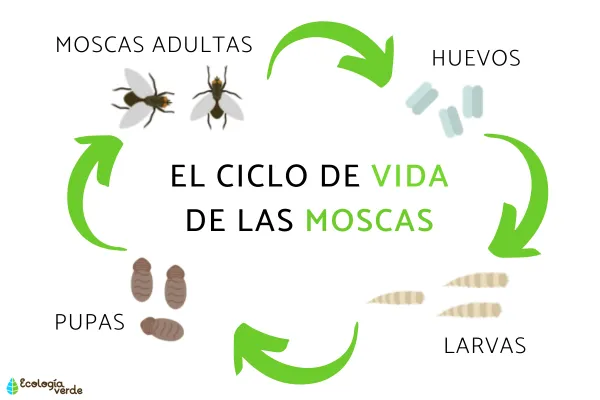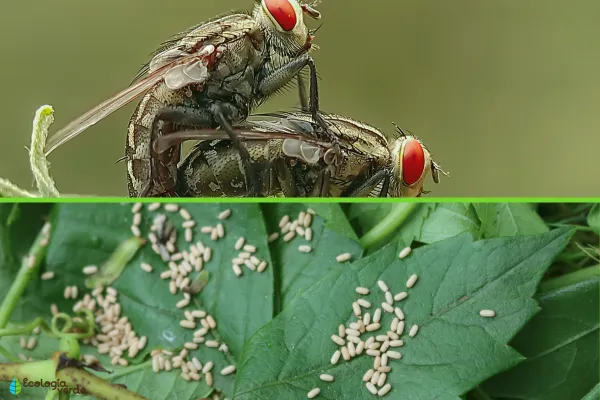Did you know that there are over 110,000 known species of flies around the world? Some, like the vinegar fly (Drosophila melanogaster), play a vital role in scientific research and are used as model organisms in genetics and developmental biology. Others, like the common housefly (Musca domestica), are often viewed as unhygienic pests that hover around food waste.
But beyond these perceptions lies a fascinating natural process: the life cycle of a fly. Understanding this cycle is not just about curiosity—it’s also essential for agriculture (as flies can be crop pests) and public health (since they carry diseases). Let’s explore how flies are born, develop, reproduce, and how long they live.

Flies undergo a complete metamorphosis, much like butterflies, and their life cycle consists of four main stages:
Flies are oviparous, meaning they lay eggs. After mating, the female fly lays fertilized eggs on decomposing organic matter, feces, or fruits, depending on the species. A single female can lay 100 to 500 eggs at once, and these eggs hatch quickly—often within 24 hours.
Once the eggs hatch, they release larvae, commonly known as maggots. These are soft, elongated, yellowish-white worms that have no legs or eyes. They feed voraciously on the surrounding organic matter to store enough energy for the next phase. This stage is crucial for growth and development.
After gorging on food, the larvae stop feeding and form a pupal case—a hard, dark capsule that protects them as they undergo a complete metamorphosis. Inside, their body is completely reorganized into a more complex adult form.
When metamorphosis is complete, the adult fly emerges. Adult flies have three main body sections (head, thorax, abdomen), as well as compound eyes, wings, and six legs. Their primary role is reproduction. They find mates, lay eggs, and restart the cycle, which can repeat many times over in their short lives.

Flies reproduce sexually. A male and female pair will mate for about 10 minutes, after which the female begins laying fertilized eggs. Their reproductive cycle is extremely fast—in ideal conditions, a full life cycle can take as little as 3 to 7 days.
A single female can lay up to 500 eggs per reproductive cycle, and she can do this 3 to 4 times in her adult life. This rapid reproduction explains why fly populations can explode in a short period and why they’re found all over the world.

Given how fast flies reproduce, you might wonder: how long does a fly live? The answer varies depending on the species:
Housefly (Musca domestica): 15 to 25 days
Fruit fly (Drosophila spp.): 8 to 10 days
Environmental conditions—like temperature, humidity, and food availability—can influence their lifespan. Despite their short lives, flies are incredibly efficient and adaptive, making them some of the most successful insects on Earth.
Flies may seem insignificant, but their biology is full of surprises. Their fast life cycles, rapid reproduction, and ability to adapt to diverse environments make them ecologically important and scientifically valuable.
Understanding their life cycle helps us better manage pests in agriculture, control disease transmission, and advance biological research. If you want to explore more about the fascinating world of flies, consider reading:
“Why Flies Are Crucial in Scientific Research”
“Comparing the Life Cycles of Butterflies and Flies”
“The Role of Flies in Ecosystems and Public Health”
Bibliography
Hickman, C.P. et al. (2009): Integral Principles of Zoology. McGraw-Hill, Madrid.
Pietropaolo, S., Beldomenico, M.J., Quiroga, P.M. & Anibal, M. (2018). Eco-epidemiology of parasitic flies of the genus Philornis Meinert (Diptera: Muscidae) in Argentina: effects of climate variability on their life cycles and impact on the health of their hosts. Retrieved from: https://bibliotecavirtual.unl.edu.ar:8443/handle/11185/1110
animal tags: flies